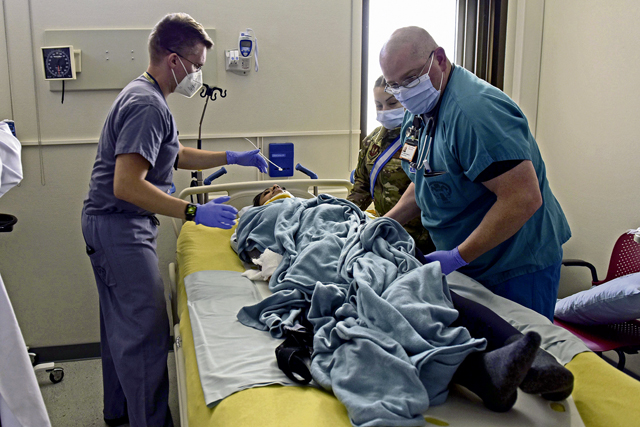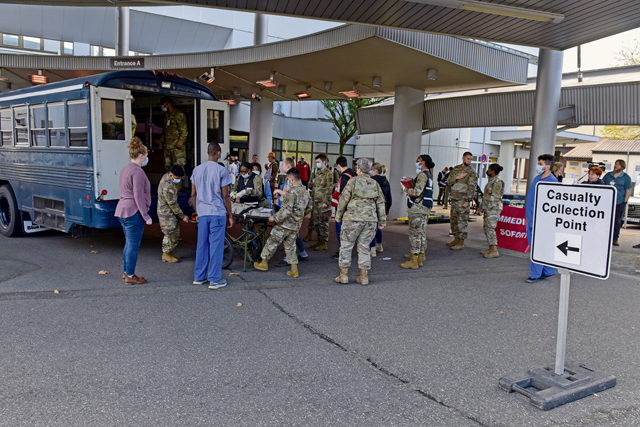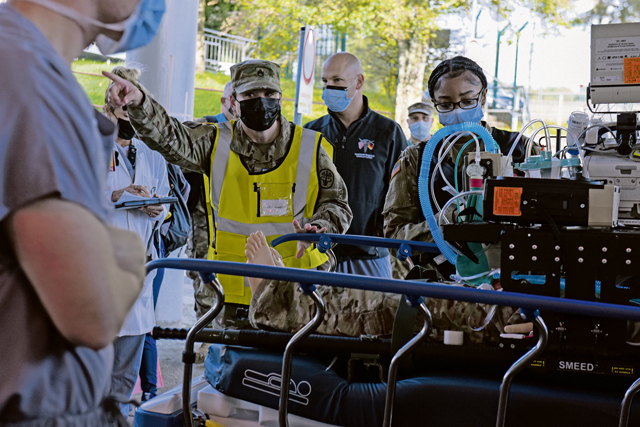
The 86th Aeromedical Evacuation Squadron along with U.S. Army Soldiers, U.S Air Force Airmen and staff assigned to Landstuhl Regional Medical Center participated in a joint-force mass casualty exercise at LRMC, Nov. 2.
The exercise tested responsiveness to transport, triage and treatment of patients as well as LRMC’s bed expansion capabilities.
The 86th AES works in tandem with the LRMC team by evacuating injured, deployed service members and treating them in-air. The patients are brought to Ramstein Air Base, and quickly transported to LRMC, which is strategically located nearby.
At LRMC, medical teams work quickly to stabilize patients. Once stabilized, they are flown back to the U.S. for further medical care.
The exercise included executing LRMC’s emergency management plan to respond to a mass casualty situation, integrating response operations and components to the Regional Trauma Network, and effectively communicating — both internally and externally — at all levels.

“This is monumental,” said U.S. Army Lt. Col. Noe Muniz, LRMC Commander’s Initiative Group chief. “Within the hierarchy of the multi-faceted healthcare system, we have our leaders in the emergency room and the emergency operations center working on mission control. It is critical everybody is able to act and think decisively so our medics are able to do their jobs effectively.”
As the largest American military hospital outside of the U.S., LRMC serves as an evacuation and treatment center for all deployed U.S. service members and civilians.
The exercise simulated a flight evacuating patients to Ramstein, using actors and mannequins, and rapidly delivering them to LRMC on an ambulatory bus, said U.S. Air Force Capt. Mike Burton, 86th AES flight nurse.
After patients were triaged, they were brought to the appropriate hospital department for further treatment. Medical teams were tested on life-saving procedures, such as placing chest tubes, arterial lines and central lines.
This joint-exercise served as a tool to assess and strengthen the military’s strategic medical capabilities. Inspectors observed the exercise and took note of ways to improve response in the event of a real-world mass casualty situation.



